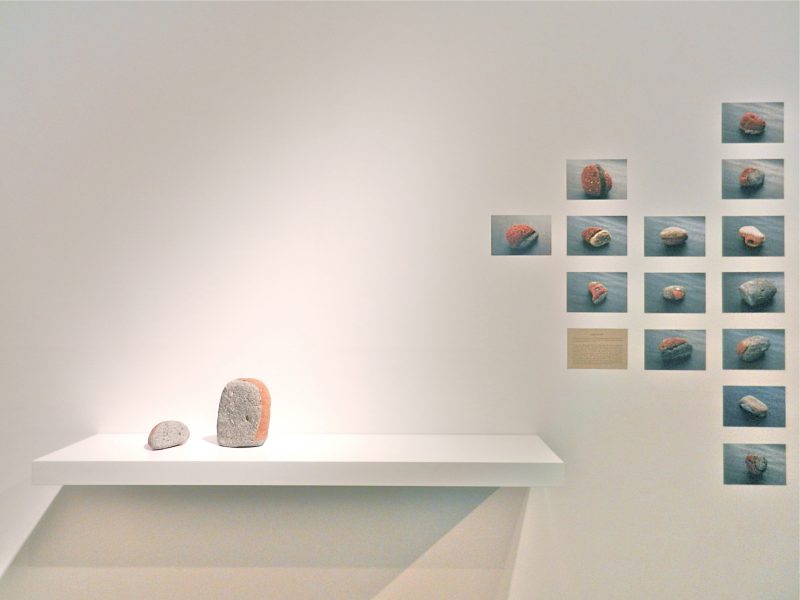
Walking, wandering, wondering
To chance, to wander, rolls off the tongue as if an opening line in Thoreau’s treatise on self-reflection and communing with nature, Walking. Delivered as a lecture by Thoreau in 1851 and published posthumously in 1862, Walking serves as a transcendental guide for interacting with nature through the physical connection of sauntering (a type of walking that Thoreau posits is the highest form), circumambulation, and wandering, in general. For Thoreau, walking was not just a mechanical act. It was a way to achieve self-awareness through a balance between being in nature and being with society. Although somewhat at odds philosophically, there has been much written about Thoreau’s connection to his English contemporary and Romanticist William Wordsworth because of his equally keen interest in walking. Wordsworth “often walked scarcely less than twenty miles a day” and was delighted with “the employment of composing verses amid scenery the most beautiful.” Building from this a linage of “walking artists,” you can draw a clear sight-line right to the mapping and land demarcations of Richard Long, Andy Goldsworthy’s experimentations with entropy and ephemerality, and on through to the graphic posterizations of Hamish Fulton’s excursions into the wild.
With the backdrop of Rebecca Solnit’s well-known book, A Field Guide to Getting Lost and Claire Hind and Clare Qualmann’s Ways to Wander, Fjord launches the large group exhibit, To Chance, To Wander. The concept of the show is laid out in this whimsical and optimistic statement, “We are searching for the sense of wonder that wandering can restore, coming from perspectives that cross languages, cultures, and our American continents.”
The conceptual overtone is set by the inclusion of American artist Helen Mirra, who is well known for her walking based projects, and Chilean artist Pablo Rivera whose research includes the poetic distillation of language and objects. This show features a balanced and stylish collection of sculpture, film, painting, prose, print, performance, collaboration, and audience participation by Philadelphia artists Anthony Bowers, Asha Sheshadri, and Theo Mullen; Brooklyn artist, Joe Bochynski; and Chilean artists Manuela Flores, Rafael Guendelman, Paz Ortúzar, and Paula Salas. These twelve participants all contribute work that, to varying degrees of specificity, starts an engaging group conversation under the show’s epigraphic umbrella, “What does it mean to get lost, now?” Using wandering as a point of departure, these artists test a range of thematic tributaries exploring language and collaboration, place and materiality, agency and entropy, to name a few.
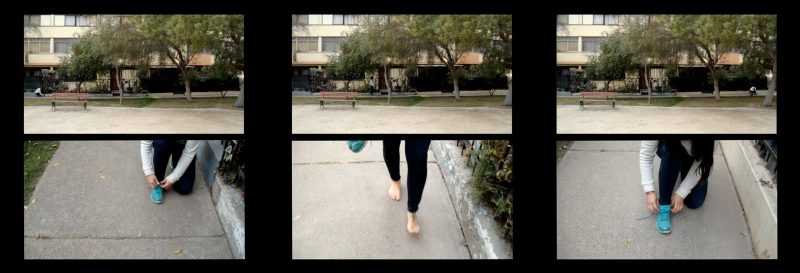
Pilgrimage and protest
One work in the exhibit that meets the terms of the show’s statement head on, albeit in an unexpected way, is Manuela Flores’ “Rivadavia 6676.” Comprised of an unassuming sheet of text, a geometric drawing rendered in pink highlighter, and a two-channel video, the artist reveals a horrific narrative in the text document describing the murder of her uncle at the hands of Chilean agents of the state in 1981. In a horizontally split video screen, Flores slowly traverses a sidewalk barefoot, back and forth, in front of a residential apartment building that is presumably her uncle’s residence, Rivadavia 6676. In the second channel of the video there is a close-up of her removing her shoes and socks for the walk. Flores’s walking effectively creates a ritualistic catharsis, a micro-pilgrimage, and a protest all in one through her visiting and pacing in front of the scene of the crime.
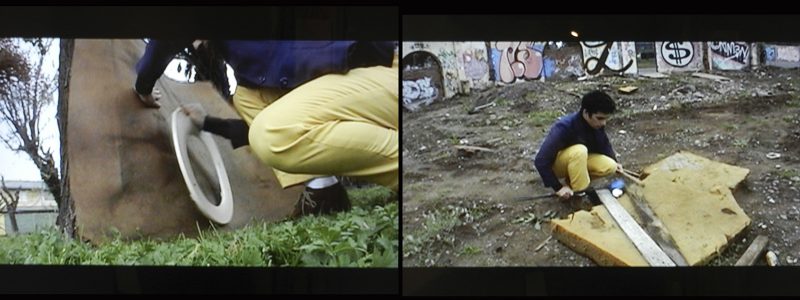
Violence and emotional rawness do not reveal themselves as overtly in any other work in the show, however, a politically conscious conversation does resonate in the work of Rafael Guendelman and Paula Salas. Salas’s interactive board game performance, “Together,” speaks more about social politics, bringing an element of social practice into the mix inviting the viewer to answer questions that illustrate collaborative efforts between parent and child. The audience’s answers are collected and will contribute to the rules of the game, which will be performed at the closing of the exhibit. In Guendelman’s digital 8 video, he documents a man “street drumming” with found objects plucked from various mounds of urban decay, busking with no audience other than the camera in a sad landscape of blight and refuse that I am left to assume is Santiago. While the percussion from the video permeates the exhibit you watch in wonder at the simultaneous virtue and depravity of the musician, while he keeps perfect percussive rhythm with an old toilet seat on a piece of plywood, and other unexpectedly melodic junk.
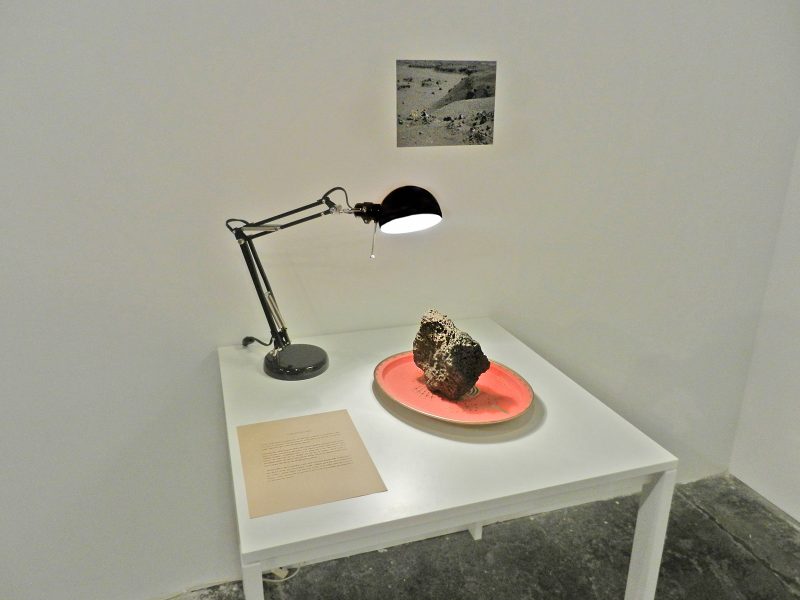
Wandering stones
The thread of entropy developed in Guendelman’s piles of detritus (not dissimilar to what you would find in some parts of Philadelphia) links up with Pablo Rivera’s two installations, “The Ideal Stone (Serendipity)” and “The Ideal Stone (Lava Flaneur).” These works tell a poetic narrative about a found stone, outlining a story of each object’s origin, and our associative connection. In the case of “Lava Flaneur” (flaneur meaning saunterer/idler), Rivera asks that the viewer consider taking a found volcanic rock home to imbue it with experiences to make up for its overall inexperience and lack geologic age. Both works take on a level of seriousness to the point of the viewer being unsure about their sincerity. Nonetheless, they are captivating observations about our connection to/with the environment. As the artists states in his text, “we all pick up stones, some gather them or even collect them. We walk, wander, go to the beach, the countryside or the mountains and almost always come back with a stone. It seems to me, that a meaningful relationship with these kind of primordial matters is common to all of us.”
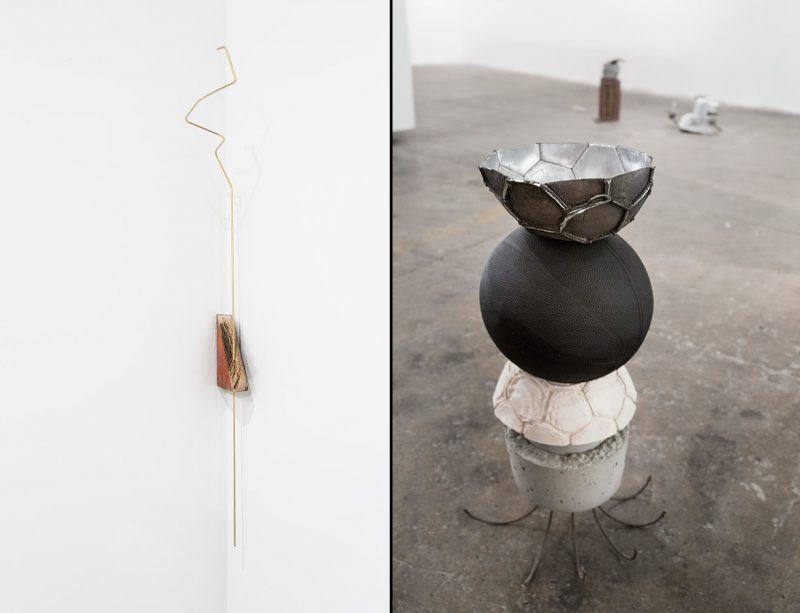
Tracing routes
Connections fan out from Rivera’s installations to the adjacent works of Theo Mullen. Specifically, “Untitled 7.16/3.17” is a profound little sculpture that is mounted in the corner of the room, a single gesture of brass wire entering and exiting a small triangle of wood. Without any direct lighting, it hangs there waiting for questions about what exactly it is–maybe a physical representation of a route taken on Google maps, or perhaps a simple play with materials found on the scrap heap during his residency at RAIR (Recycled Artist in Residency).

In Anthony Bowers’ and Paz Ortúzar’s three collaborative work(s), “The Blue of Distance,” ostensibly derived from Rebecca Solnit’s four essays of the same name, the artists experiment with parallel thematics as literal as the color blue and as esoteric as a sculpture made of clear vinyl tubing mounted to the wall with copper hangers, filled with water and a copper wire. It’s a hard piece to describe, but similar to Mullins’ previously mentioned project, it intuitively reads as line, a route, or a border, or a river. Perhaps it’s a reference to Solnit’s observations about the clearness of shallow water; it’s color derived from what’s under/in it; or her meanderings about the structure of the Mississippi River, the Great Salt Lake, and Lake Bonneville. “With that long line of footprints unfurling behind me, I couldn’t get literally lost but I lost track of time, becoming lost in that other way that isn’t about dislocation but about the immersion where everything else falls away.”
Connections between the works in this exhibit are there to be both lost and found, and admittedly they are not always clear or unconditional. And I regret not having the chance to participate in one of the scheduled wandering tours (clearly a nod to a current Tate Modern course, Ways to Wander the Gallery). Although I’m not necessarily a proponent of contextual statements, but rather a supporter of Duchamp’s assertion that the viewer completes the meaning of a work, I found some of the work in the exhibit to be distant in a way that needed some additional context to draw it, and me, into the fray. So when you come to the Crane see To Chance, To Wander, which I recommend you do, be sure to set aside a good amount of time to saunter, circumambulate, and wander the exhibit while attempting to answer the question for yourself, “What does it mean to get lost, now?”
To Chance, To Wander is on view at Fjord through May 27, 2017. Located in the Crane Arts Building at 1400 N. American St., Fjord is open Saturdays from 12–4. There will be one more “Wandering Tour” at 5:30 pm on May 21, as well as an “interactive board game happening” with Paula Salas on May 27 at 2 pm.









